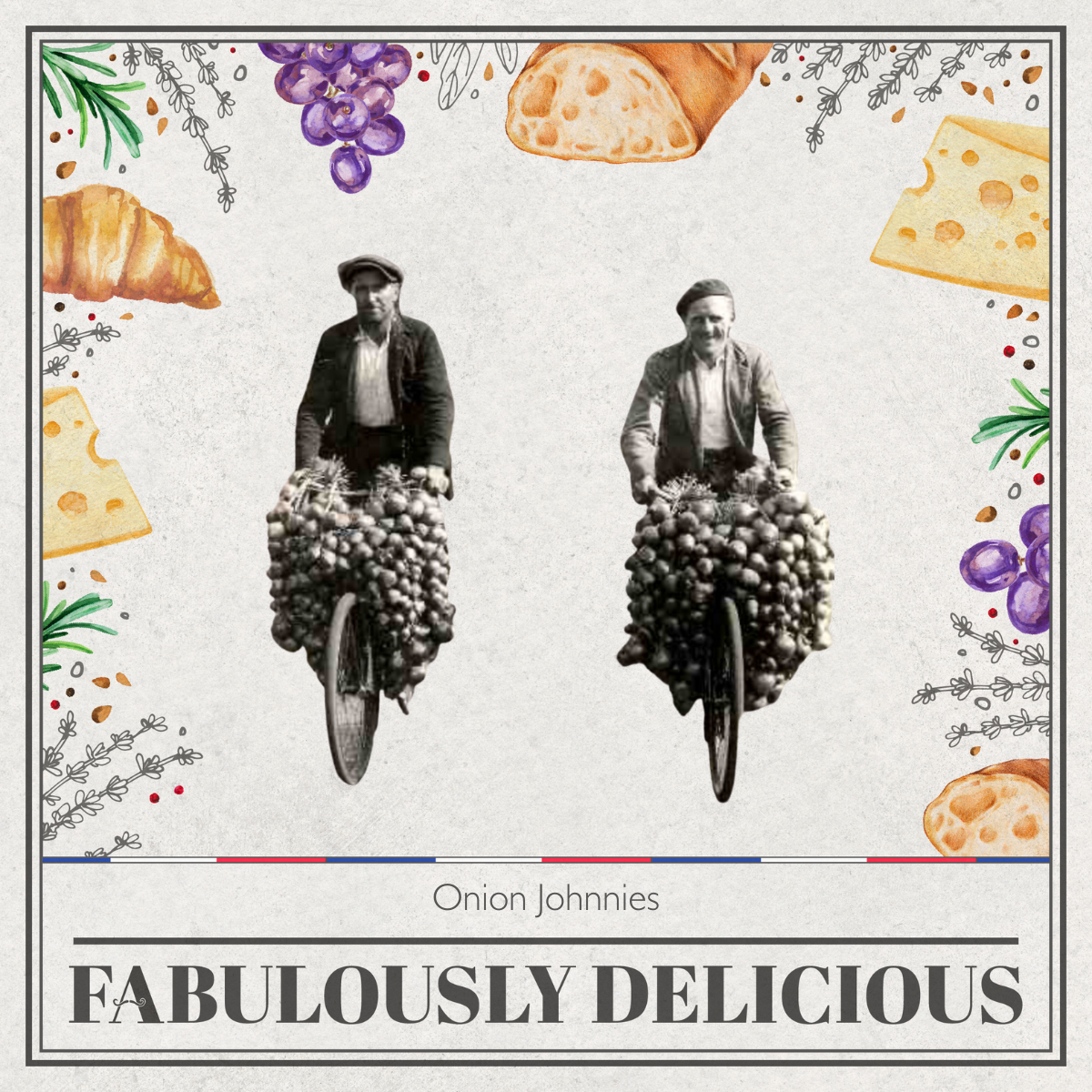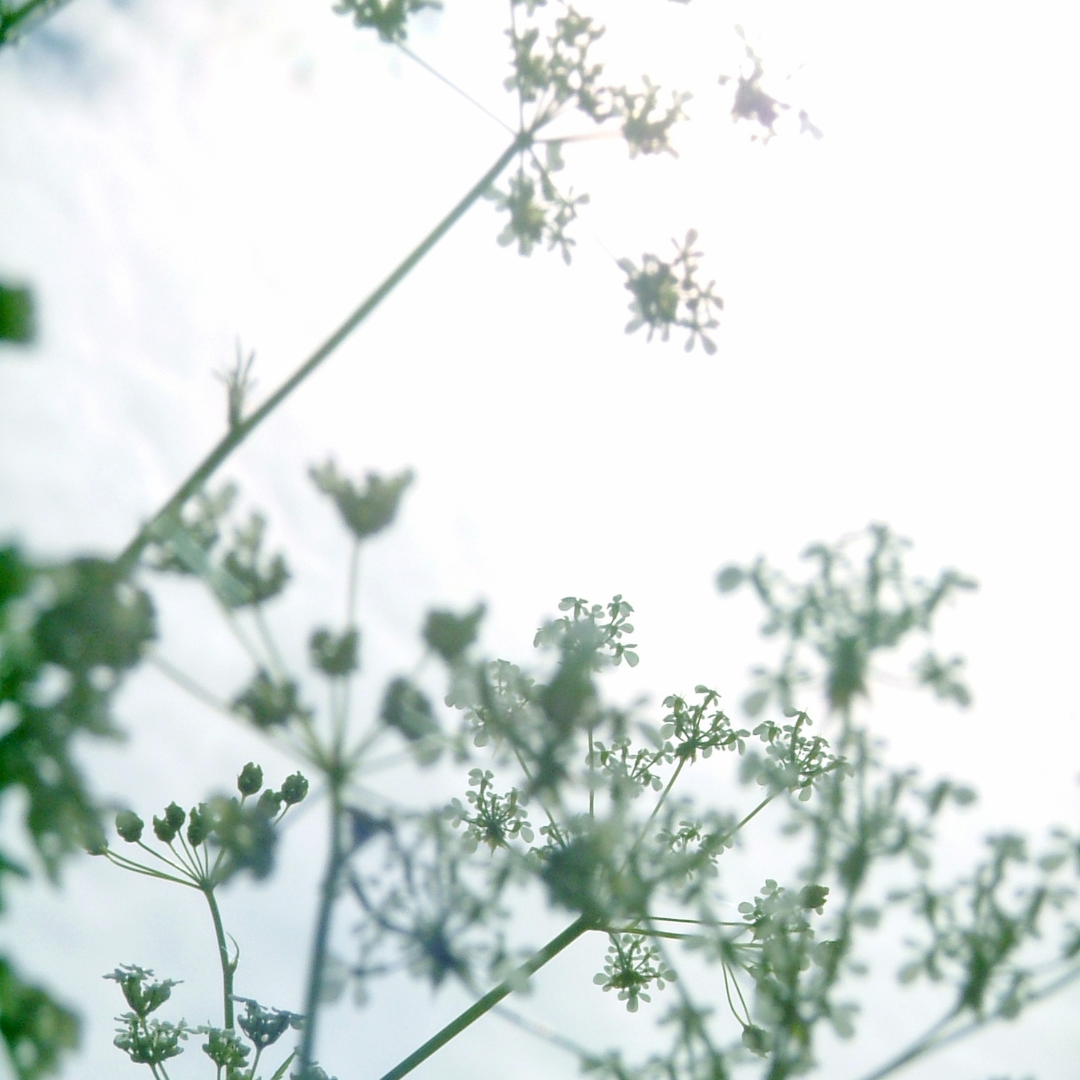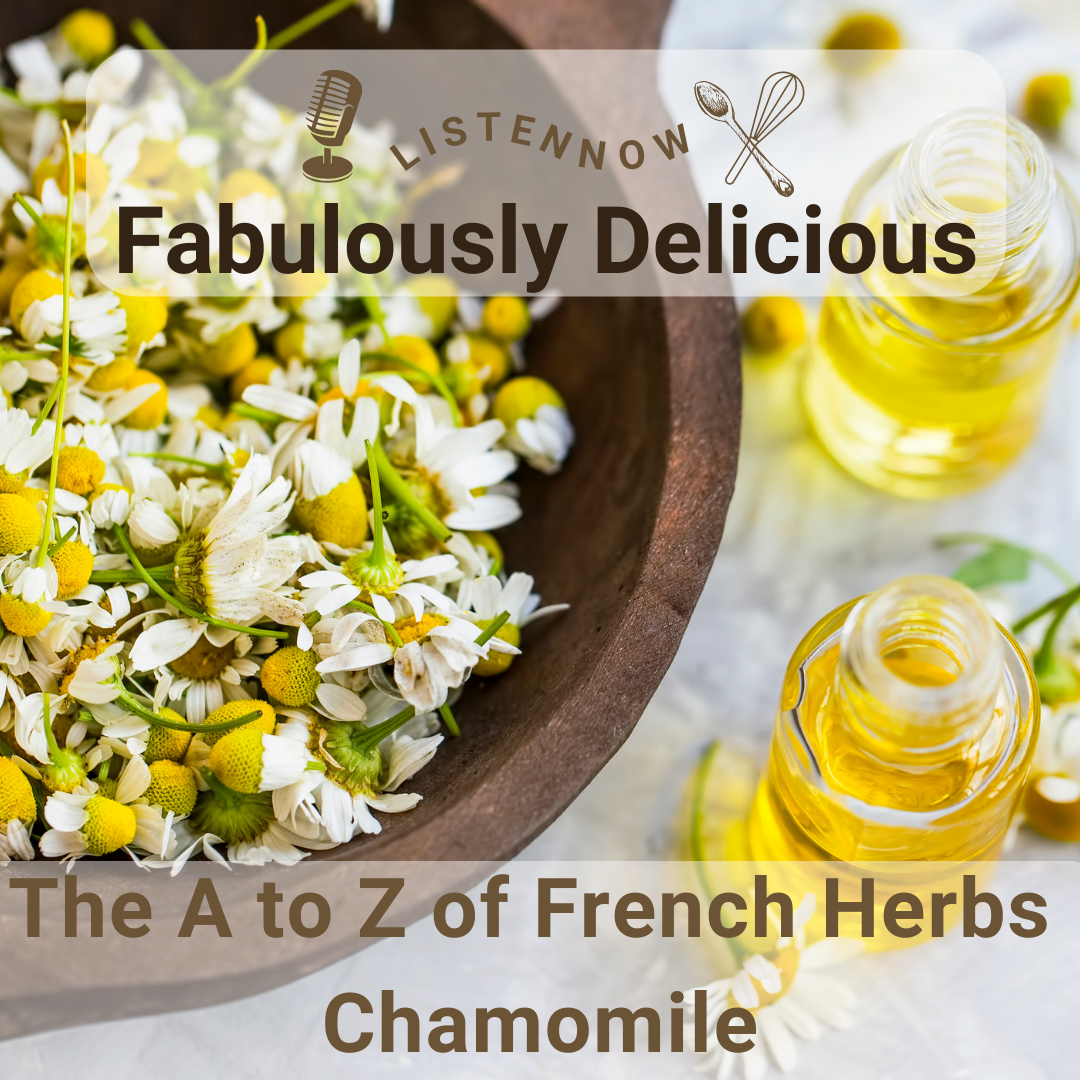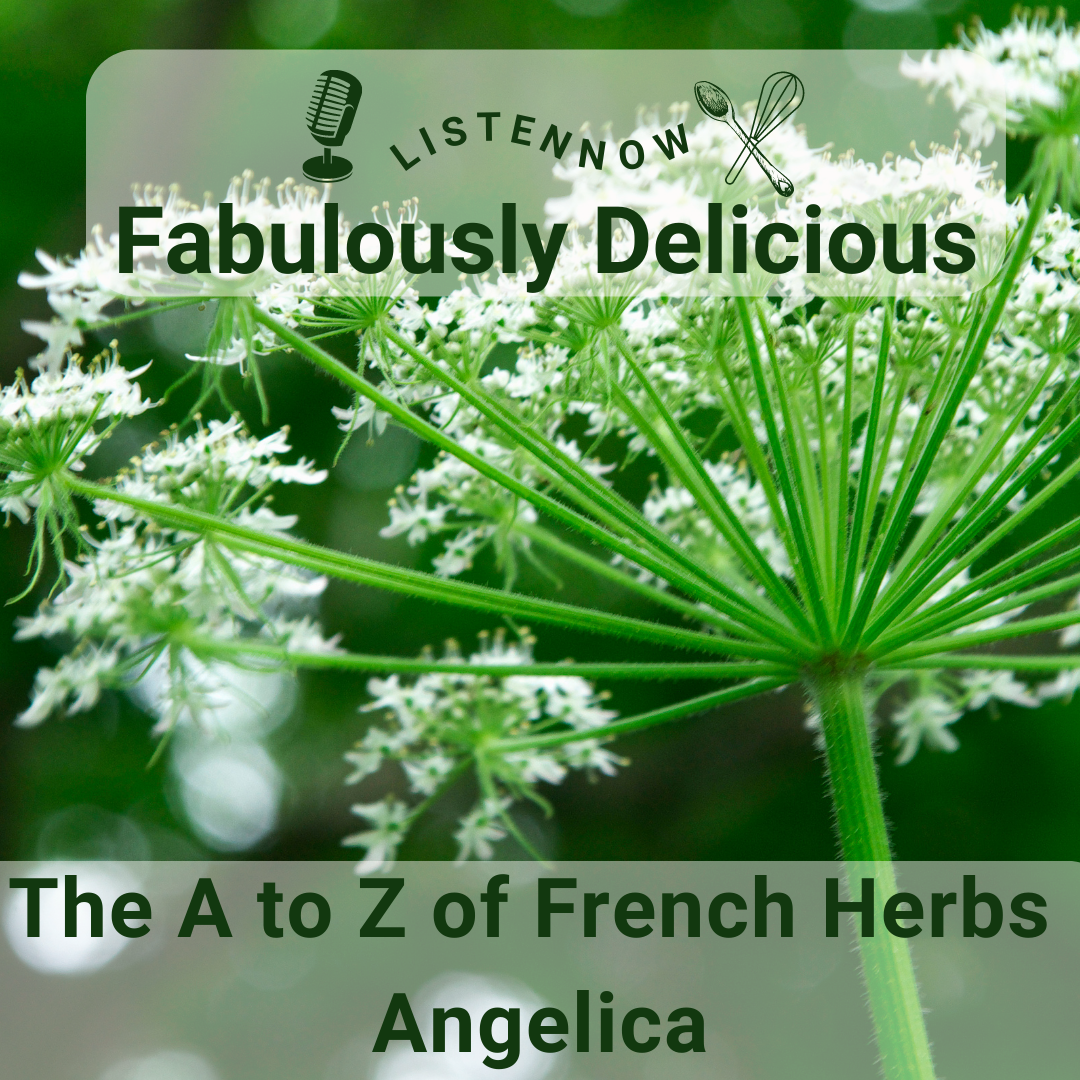French Recipes, Podcast Episodes and France Travel Tips!

Onion Johnny
The Roscoff Onion is a culinary treasure hailing from the coastal town of Roscoff in Brittany, France. Renowned for its subtle sweetness and distinct pink hue, this onion variety has graced the tables of gourmands and chefs alike for centuries.
We can't overlook the indispensable role onions play in French cooking, especially in the iconic Soup L’Onion, a beloved classic that epitomizes the heartwarming essence of French comfort cuisine.
But what about the indispensable role they’ve played in French culture? Well, the Onion Johnny is a great example of how important the simple, eye tearing, vegetable the onion is. It might be a staple in many recipes and cuisines around the world but to French culture it’s iconic.

A to Z of French Herbs - L'ail du Lomagne
In the world of culinary delights, France is renowned for its exceptional cuisine and unique flavors. At the heart of French gastronomy lies the concept of "terroir," an expression of a region's distinct character and natural influences on food production.
From the rolling vineyards of Bordeaux to the fertile fields of Provence, terroir encapsulates the geographical factors that shape the taste and quality of ingredients. French cooking embraces this philosophy by utilizing the finest local produce, such as fragrant herbs, succulent meats, and exquisite cheeses.
The result is a harmonious fusion of flavors, where each ingredient contributes to the artistry and sophistication of French cuisine.
In an area of France known for its Fois Gras and Hazelnuts is the region of Lomagne which also produces its own garlic variety the L’Ail Blanc du Lomagne, White garlic of Lomagne.

A to Z of French Herbs - Garlic - Ail
Garlic in French is pronounced ail. The word garlic derives from old English, garlēac, meaning gar (spear), and leek, as a 'spear-shaped leek.
Some would say it’s more a vegetable than a herb but in French cuisine, it’s considered a quintessential herb. Garlic is part of the lily family which also includes onions, leeks, and shallots. Allium sativum is a perennial flowering plant that grows from a bulb. It has a tall, erect flowering stem that grows up to 1 m (3 ft).
Whilst white garlic originated in Asia they think over 7,000 years ok it is now found all around the world. It’s used for culinary and medicinal purposes. Medicinally it’s often used as an herbal remedy for colds and is thought to reduce blood pressure, and cholesterol and even been proven to have antibiotic properties

A to Z of French Herbs - Fine Herbs - Fine Herbes
Fine herbs, also known as fines herbes, refer to a classic French blend of delicate herbs commonly used in French cuisine. The term "fine herbs" translates to "fine" or "delicate" herbs in English.
The blend typically includes a combination of four specific herbs:
Flat-leaf parsley or Italian parsley is commonly used in fine herb blends. It has a fresh and slightly peppery flavor.
Chives are slender, green herbs with a mild onion-like flavor. They provide a subtle, delicate taste to the herb blend.
Tarragon is an aromatic herb with a unique flavor that is slightly reminiscent of anise or licorice. It adds a distinct touch to fine herb mixtures.
Chervil is a delicate herb with a mild, slightly anise-like flavor. It resembles parsley but has a more subtle taste. Chervil is an essential component of fine herb blends.
These four herbs are finely chopped or minced and combined in equal proportions to create the fine herb blend. The mixture is used to enhance the flavors of various dishes, including omelets, soups, sauces, poultry, seafood, and vegetable preparations. The fines herbes blend is particularly popular in French cuisine and provides a fresh and aromatic touch to dishes.

A to Z of French Herbs - Fennel - Fenouil
When is a herb, not a herb but a spice? Actually whilst we are on the subject when is an herb, not only a spice but also a vegetable? When it’s Fennel that’s when. Yep, Fennel is not just an herb but it’s also a spice depending on the variety of vegetables.
Fennel in French is pronounced Fenouil. Fennel came into old English from the old French word fenoil which in turn came from the Latin word faeniculum, a diminutive of faenum, meaning "hay".
Fennel, with its delicate aroma and distinct licorice-like flavor, has been an integral part of French cuisine for centuries. From the kitchens of Michelin-starred restaurants to traditional home cooking, fennel plays a significant role in enhancing the flavors of various French dishes. Let's delve into the origin and history of fennel in France and explore its versatile uses in the country's culinary traditions.

Celebrating the Finest Experts in French Cuisine
Today we are celebrating the 2nd anniversary of Fabulously Delicious. Yes, that’s right, we are in our third season, 2 years, 84 episodes, 51 guests, and over 49 hours of content devoted to French food. So this episode is a celebration of some of my favorite parts of just a few of those episodes.
The very first episode of Fabulously Delicious was with American Pastry Chef Molly Wilkinson. Molly is an Instagram sensation and runs a fabulous online pastry cooking school as well as doing cooking classes in her fabulous apartment in Versailles. I had to ask the most important question when it comes to Macarons and that is what is the difference between a Macaron, Macaroon, and Macron?

A to Z of French Herbs - Elderflower - Fleur de Sureau
Foraging in France can be a delightful adventure, but it's crucial to be aware of the potential dangers that lurk among the bountiful flora. Among the treasures of the French countryside is the fragrant Elderflower, known for its culinary and medicinal uses.
However, it's important to exercise caution when foraging elderflowers, as certain parts of the plant, such as the leaves and unripe berries, should never be consumed due to their toxic properties. Proper identification and knowledge of safe usage are essential to ensure a positive foraging experience.
In addition to Elderflower, France is home to various other plants that demand careful consideration.

A to Z of French Herbs - Dill - Aneth
Dill
Dill in French is pronounced Aneth. It’s a hardy and fragrant annual plant that in your garden will grow to around 60cm tall. It has very fine blue-green leaves with deep yellow flowers. Both the leaves and seeds are used in cooking throughout the world. It’s related to celery and tends to replant itself and spread widely which you should take note of if planting and growing your own.
Dill is an annual herb from the celery family Apiaceae and isn’t native to European countries despite its use in many. It’s native to North Africa, Chad, and Iran, but is widely grown throughout Eurasia. It was introduced to Europe by the Romans who thought that dill symbolized joy and brought it with them everywhere to make them happy of course. In the Middle Ages, it was thought that dill had magical properties to protect houses and so would be hung around the house.

A to Z of French Herbs - Corriander
Taste is a fascinating aspect of human perception, as it varies greatly from person to person. It's often said that one person's delicacy is another person's distaste, highlighting the vast differences in individual preferences. The notion that coriander can taste heavenly to some while resembling soap to others is just one example of the intriguing and diverse world of taste.
Throughout the culinary landscape, there are numerous instances where people's taste buds diverge, forming a rich tapestry of unique and often polarizing flavor experiences.
Coriander yes is probably more well-known in Asia or Middle Eastern cuisines but it’s also used in French cuisine.

A to Z of French Herbs - Chives
Chives in French are spelled Ciboulette and are also known as Cive. Their scientific name is Allium schoenoprasum and are a species of flowering plant in the Amaryllidaceae family which are a group of perennial bulbous plants that interestingly are bisexual apparently, how a plant is bisexual I have no idea but hey each to their own. You go chives!
Chive in English derives from the French word Cive from ceps the Latin word for onion. In the middle ages, the chive was known as a rush leek. In 80 A.D. by Marcus Valerius Martialis in his "Epigrams". “He who bears chives on his breath, Is safe from being kissed to death”.
The Romans believed chives could relieve the pain from sunburn and even a sore throat. They believed eating chives could decrease blood pressure and act as a diuretic. Dutch farmers in the 19th century fed their cattle chives to give the milk a different taste and Romanians used chives in fortune telling and hanging dried chives around the house to ward off disease and evil.

A to Z of French Herbs - Chicory
Can a herb be a herb, spice, vegetable, or salad? No some might say. Well, don’t tell Chicory that as it as it has so many varieties that if it was a person it would be diagnosed with multiple personality orders I think. Which variety of chicory do you know?
Chicory is spelled in French, Chicorée. It’s a herb that is native to Europe. Most types originated in the Mediterranean area and have been used as a food source for centuries. It is often seen as a wild plant along the sides of roads throughout Europe. But it is also grown now around the world in the USA, China, and Australia as well as other countries.
Common chicory in the plant world is called Cichorium Intybus and is a woody, perennial herb that has usually bright blue flowers, but sometimes also has white or pink flowers. It’s a member of the Asteraceae family whose other members include sunflowers and daisies.
The herb variety when it’s flowering grows around 1.5 meters tall and isn’t the most attractive-looking plant as it has a tough, grooved, and hairy stem. In Europe, it will flower from March until October.

A to Z of French Herbs - Chervil
Continuing the A to Z of French herbs, today's herb is the cousin to parsley. To be honest, I'd never heard about it before I moved to France, Chervil.
Chervil is pronounced Cher like the singer and ville like the French word for town. But in French, it's called Cerfeuil.
Chervil is often called French parsley or garden chervil. It’s an annual herb related to the parsley family. It used to be called Myrhis as its oil had an aroma similar to the resin from Myrrh which is extracted from a tiny thorny tree that’s used for perfume and incense amongst other things.
Back to chervil though, it’s commonly used as a seasoning for various French dishes and most notably used in the popular herb mixture fine herbes.
The name chervil is Anglo-Norman from Latin and is derived from the Greek chaerophyllon, meaning the herb of rejoicing or, less reverentially, the happy herb.

A to Z of French Herbs - Chamomile
Chamomile is a flowering plant that belongs to the daisy family. The plant has small white flowers with yellow centers, and it's known for its distinctive scent and taste. Chamomile has a long history of medicinal use, but it's also used in cooking in many parts of the world.
There is two common species of Chamomile one is often called German Chamomile or Water of Youth and the other is Roman, English or garden chamomile. The later is often used to create a chamomile lawn.
A chamomile lawn is a type of lawn made up of chamomile plants instead of grass. The lawn is created by planting chamomile plugs or seeds in a prepared area of soil, which is then regularly watered and maintained. One such lawn was feature in Mary Wesley’s 1984 novel, funnily enough called The Camomile Lawn which feature a house in Cornwall UK with a lawn planted with chamomile rather than grass.

A to Z of French Herbs - Bay Leaves
One of or possibly the most important herbs in French cooking. It could be said is the bay leaf. It's essential in many French dishes, stocks, and of course the bouquet garni. So what is a bay leaf?
In France, bay leaves are known as Feuilles de Laurier. Feuilles means leaves in French. They are part of the evergreen family of trees. Laurel bay trees are actually related to the cinnamon family.
They're said to facilitate digestion, reduce bloating and flatulence, and also are good for infections, sprains, muscle pain, joint pain, rheumatism, relieving colds and flu and lowering blood pressure, fighting stress and anxiety.

A to Z of French Herbs - Basil
Basil isn't always thought of as a French herb, but it certainly has its place in French cuisine, especially the cuisine of the Mediterranean or Provence area.
Basil in French is pronounced Basilic. One variety of basil sold in France is actually called French Basil, but it’s known to many people around the world as Thai basil or sweet basil.
French basil belongs to the lamiaceae family or mint family of herbs and is known to many as St. Joseph's wort. It's also Known to French chefs as the king of herbs or herbs royal, the Royale herb.
The herb royal name is probably one of the most popular names for basil in France. But the name basil actually comes from the latin Basileus or the Greek βασιλικόν φυτόν (basilikón phutón), meaning Royal. It said that the Princesses of Byzantium gave it its name for its beauty and its fragrance.

A to Z of French Herbs - Angelica
Angelica is considered a vegetable rather than a herb in some countries in Europe. But in France, it's considered to be a herb. It's used in a variety of ways. The candied Angelica is probably the most well-known and used.
In the first season of my podcast Fabulously Delicious The French Food podcast I spoke with Elise Botiveau about the Galette Charentaise, which is a cake that Elise grew up making. This cake or gateau as they like to call them here in France and has a special ingredient, Angelica, candied Angelica to be exact. So what is Angelica
Angelica is an aromatic herb that grows one to two meters high, sometimes even higher. Its leaves have hairs on the underside and the plant has white or greenish flowers depending on the variety. It tastes a bit like celery. In Finland actually, where it's treated like a vegetable. The stems are often eaten raw like celery. Stems can also be added to an assortment of other vegetables being roasted or as a herb in salads and soups.

A to Z of French Herbs - Absinthe
Absinthe the herb not the drink, otherwise known as wormwood. It's not just something used to make spirits. It's also an ingredient used for medicinal purposes, as well as cooking.
Absinthe is not just a drink that we talked about. In my episode of Fabulously Delicious with Forrest Collins from 52 martinis. But absinthe is also a herb, which can often be called Wormwood, Grande Wormwood, Absinthium, Mugwort, Wemout, Wermud, Wormit or Wormod.
Absinthe or Wormwood grows in North Africa and regions of Eurasia as well as now Canada and North America.
Although it is used as an ingredient in the popular drink Absinthe and other spirits as well it is mostly used as an ornamental plant.

